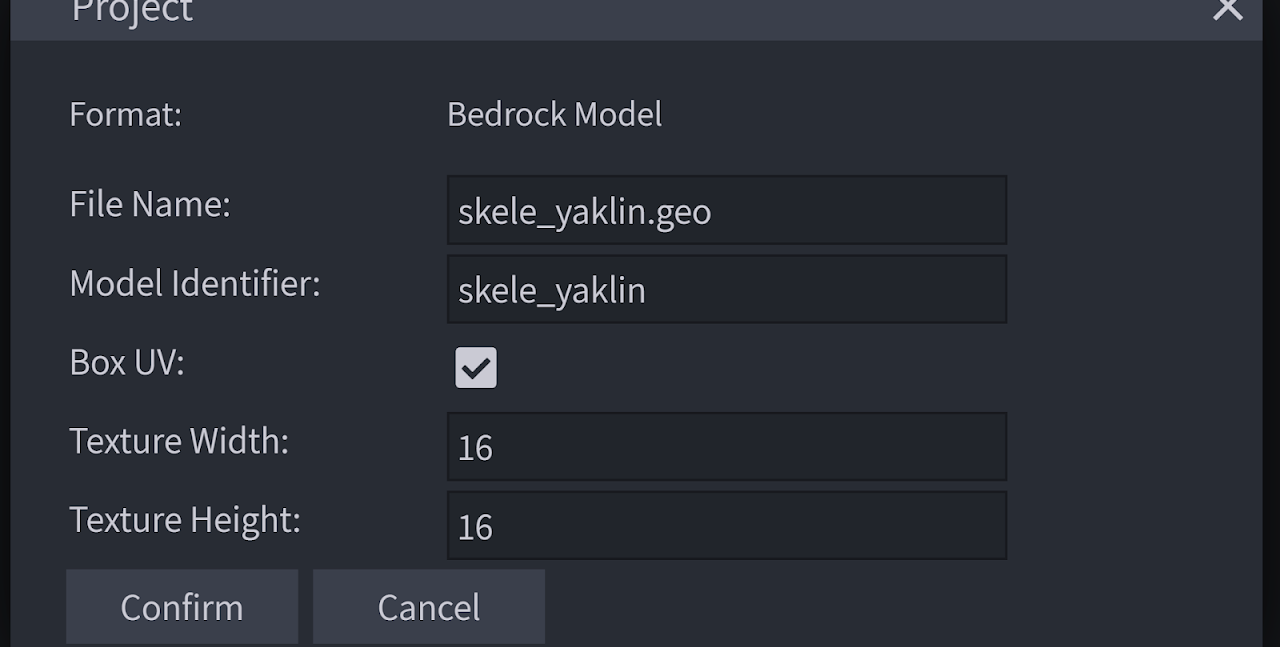

- #BLOCKBENCH HAVE A ONE SIDED TEXTURE HOW TO#
- #BLOCKBENCH HAVE A ONE SIDED TEXTURE MOD#
- #BLOCKBENCH HAVE A ONE SIDED TEXTURE UPDATE#
- #BLOCKBENCH HAVE A ONE SIDED TEXTURE MODS#
- #BLOCKBENCH HAVE A ONE SIDED TEXTURE CODE#
"parent": "folder/filename", How to fix the issueĭon't use the parent model text field.
#BLOCKBENCH HAVE A ONE SIDED TEXTURE CODE#
"folder" would be block or item, the "filename" would be the filename of the model you're calling the code from. The parent code in the JSON file looks like the following code. Mojang uses this system to call things from other model files in the "/models/block" and "/models/item" folders. The main use of that text field is to call other settings from other model files in the same namespace and folder. Example of what to doĪ common issue that people have when making blocks or items is using the "Parent Model" text field. It is a good idea to keep copies of your Blockbench models for this reason.
#BLOCKBENCH HAVE A ONE SIDED TEXTURE UPDATE#
If you have a saved workspace of your Blockbench model, then you can use that and update the model name, model identifier name and, texture name then re-export your model. The same applies for mob model parts, except naming for these should be lowerCamelCaseNaming. Also make sure the name does not start with a digit. Only use English alphabet characters and digits for names. Java model names should follow CamelCaseNaming. Keep in mind that you should keep your model name, your model identifier name, and your texture name the same name to avoid this common issue. The first reason is the file name or texture name is the same still, or the second major issue is the model identifier name has not been updated for the new model.
#BLOCKBENCH HAVE A ONE SIDED TEXTURE MOD#
Example of a proper version for 1.16.5 and 1.15.2 mod modelsĪnother common issue is when people clone their entity models, they get an error saying the model already exists this comes down to two main reasons.
#BLOCKBENCH HAVE A ONE SIDED TEXTURE MODS#
What mapping version to useįor mod models below and including 1.16.5, use MCP mappings, for mods for 1.17 and newer, use Mojmap mappings. If your models are having issues after, and try to update your models Export Version and export them again and replace the files in MCreator. Select the same version that your mod uses. Make sure that your using your model is exporting to the same version by going to (File > Project > Export Version). You should not use any version under or above 1.14 for your Export Version, as this can cause issues with entity models. It's also a good idea to keep Blockbench updated to resolve any issues with your export version.Īn example is if you were making a 1.14.4 modification. Many problems can be caused by using the wrong version. Now it's time to create the behavior pack custom block json file.A common issue is when an entity model is not for the same version of Minecraft as your modification. Remember, if you are using custom geometry and materials an entry in blocks.json is completely optional, so we did not add one for this block. Finally, you can add an entry to blocks.json to give this block a sound.Navigate to custom_block_resource_pack/texts/en_US.lang and add a localized named for the bubble fish.Add a friendly name in terrain_texture.json by navigating to custom_block_resource_pack/textures and editing the terrain_texture.json file.Add the bubble fish texture in the custom_block_resource_pack/textures/blocks folder.Add the downloaded geometry file by navigating to custom_block_resource_pack/models/blocks and copying the file in.Export the file in Blockbench just as we did for the sushi block.If at any point you get lost, please refer back to the previous custom block tutorials or the minecraft-samples page noted above. This isn't our first time setting up a custom block, so this time we're giving you shortened steps. > Another tutorial, another excellent follow-along video!

You can create your own transparent block, or check out the minecraft-samples page for more information. The bubble's texture was created in Paint3D to be able to create opaque, translucent, and transparent pixels. The geometry is laid out in the UV map to correctly appear as we want it to in-game. Then, there's an internal fish that's a 3x4x5 block with five 1x1x1 blocks added for a tail. The bubble is made up of a 16x16x16 block. To exemplify this, we will be using the bubble fish block shown below because it has a wide range of pixel types that are affected differently by each render method. In this tutorial, we will focus on understanding how the different render methods in the material_instances component affect the rendering of our custom block. Custom Blocks Part Two: Geometry and Material Instances.Custom Blocks Part One: The Simplest Block.It's recommended that the following be completed before beginning this tutorial: Let's explore some fun effects using the render options available through the material_instances component. Okay, so we can make blocks that are different shapes, which is awesome! But what if we want more cool options? How does a stained glass block work, anyhow?


 0 kommentar(er)
0 kommentar(er)
